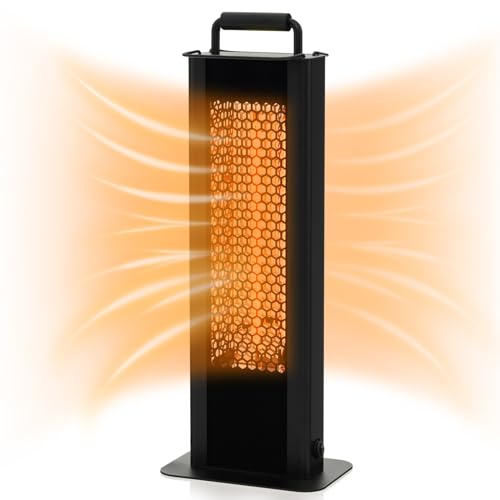14 Smart Ways To Spend Your Extra Patio Heat Lamp Electric Budget

How to Choose a Patio Heat Lamp Electric
When you want to heat your patio, you have many options. In contrast to propane models that require refills, electric heaters can deliver instant heat by flicking a switch or pressing a button.
They don't release any gases that could be a health hazard. Some have adjustable settings for heat for varying distances.
Type of Heater
With the appropriate patio heater, you will be able to comfortably enjoy your outdoor living spaces well into the night and across the seasons. Patio heaters come in many varieties, including freestanding propane or natural gas models, as well as ceiling or wall mounted electric radiant heaters. fireplacesandstoves will depend on the dimensions of the area, the power sources available, and your personal preferences.
The majority of patio heaters use electricity, natural or liquid gas to generate heat. They emit heat through convection heating in combination with radiant heating. The heat output of patio heaters is measured in watts which can be converted to British thermal units (BTUs) to give a comparative. Some also have adjustable heat settings for greater flexibility.
Patio heat lamps incorporate an electric burner on a pole with an aperforated screen that reflects the flames and radiates heat downwards to warm objects, people and furniture. Some outdoor heat lamps have reflective reflectors that sit over the burner and can be silvered in order to limit the amount of heat is lost upwards.
Gas patio heaters are among the most common heaters for patios. They can heat several tables quickly and evenly. These heaters are portable and run from propane tanks or plumbed into your natural gas line, with the latter offering more convenience and lower upfront installation costs, but also requiring an ongoing cost of fuel.
Gas patio heaters are becoming increasingly popular as more houses have natural gas lines. They are easy to install, but do require a dedicated and properly functioning gas line in order to function in a safe manner. Natural gas heaters that are portable are available with extension hoses to overcome this limitation, but they could be a trip danger and could create an additional fire hazard when not in use.
Safety
Most electric patio heaters are safe to use in enclosed areas because they allow heat to radiate outward instead of upwards toward material that is combustible, such as the roof. However, they're not meant for use under an open roof. The heater should be placed at least 18" from adjacent walls or 6" from the ceiling to prevent fire hazards.
The propane and gas patio heaters can only be used in enclosed areas that are fitted with a durable cover made for outdoor use. These covers are usually made of fire-retardant canvas and have an open roof that can be closed. The safety concerns with these types of outdoor patio heaters are related to the fumes and flames they release. They should be kept away from flammable objects like chairs and curtains.

Follow the instructions and safety guidelines of the manufacturer when installing a patio heater or heat lamp. Make sure you select one that has UL and CSA certifications, and also read the owner's manual thoroughly. Make sure that the heater is not within reach of children and pets. Some free-standing patio heaters, such as EUROM, come with a built-in tipping safety that shuts down the device in the event that it falls over.
If your patio heater runs on a natural gas line it is essential to inspect the condition of the line periodically and to test it for leaks by an experienced professional. If the line is in need of replacement get it replaced by an experienced plumbing professional who is licensed. A professional can determine if the line is properly routed or if it should be routed through an underground pipe. A professional can also make sure the heater in the patio is plugged into an outlet that is GFCI (ground fault circuit interrupter) certified to guard against electrical fires and shocks.
Installation
The size of the patio heater will determine the amount of heat it radiates into the space. The heater should be placed away from surfaces such as plastic and wood that may deform. You can mount the heater on a wall, structure or other surface using conventional mounting brackets. Certain models have soft starters that reduces the current at the highest level to ensure your circuits are protected.
